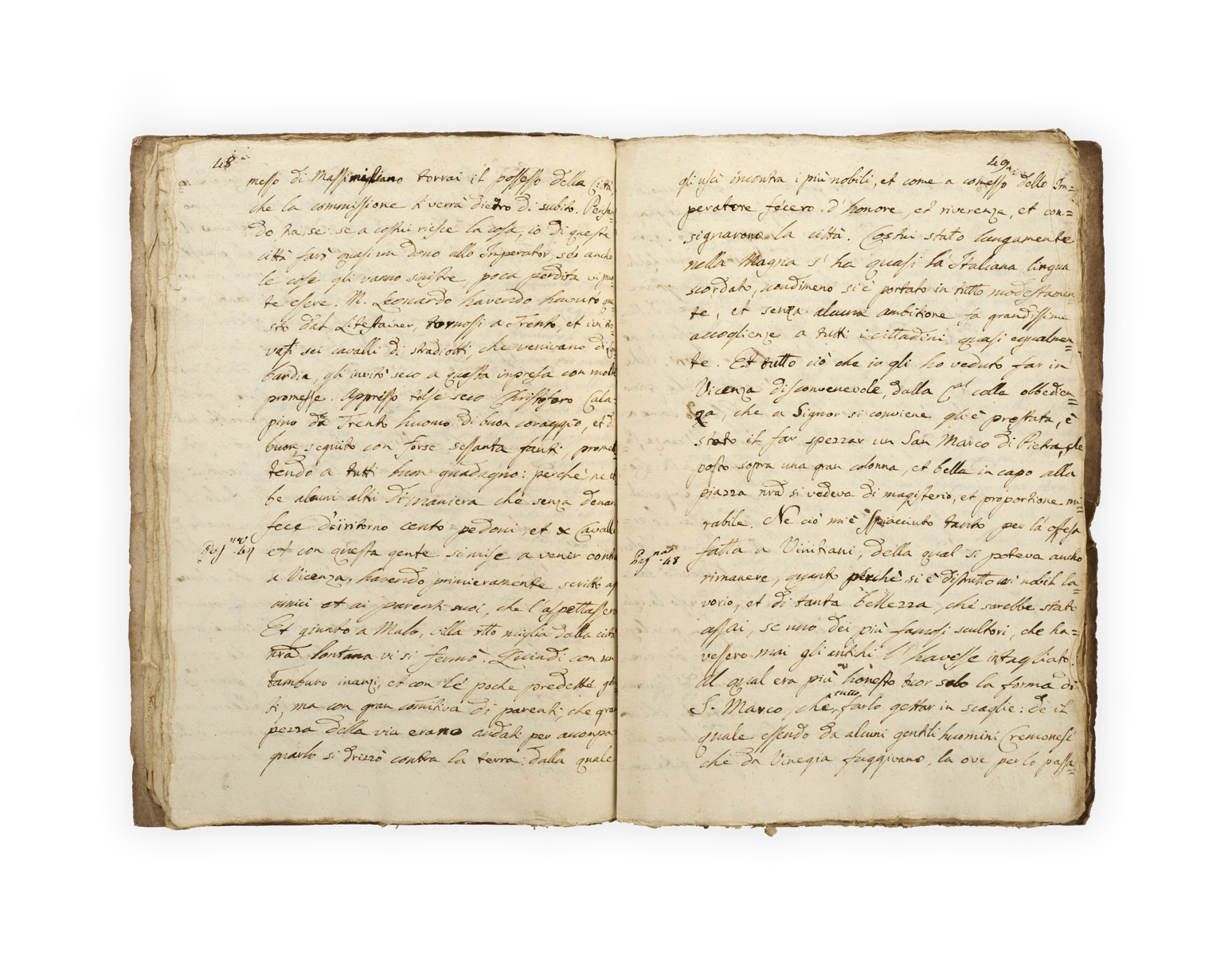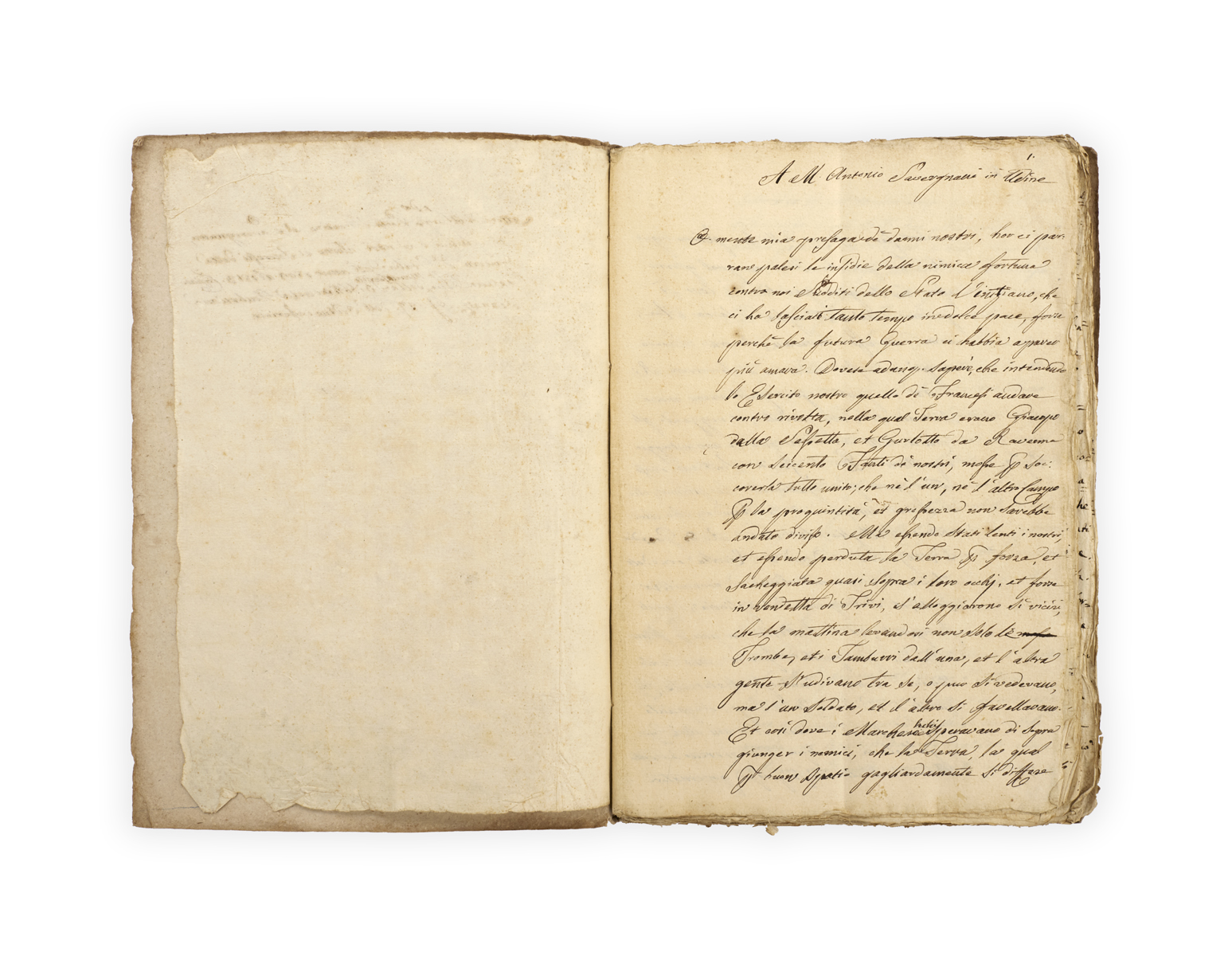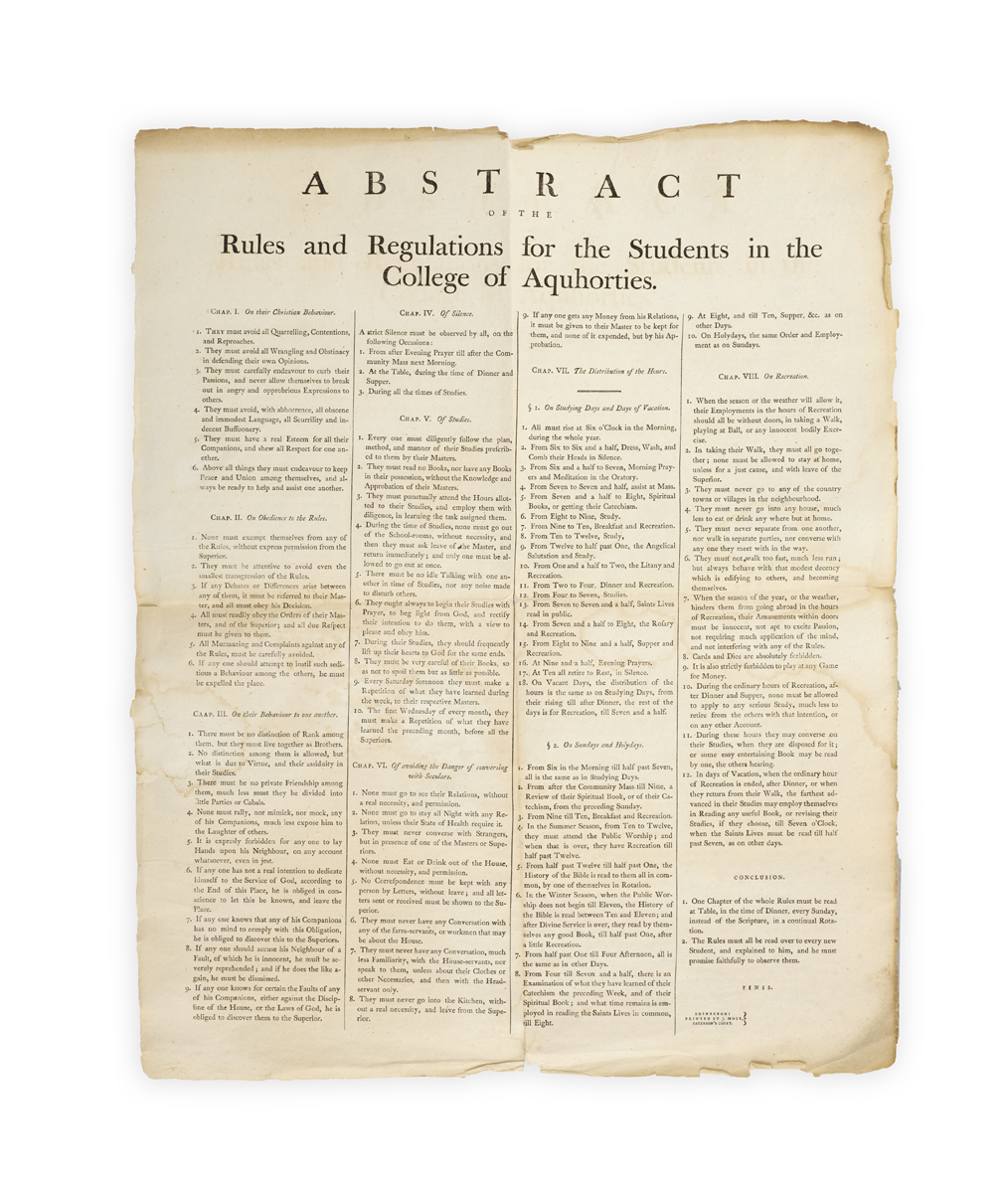



PREDATING PUBLICATION
[DA PORTO, Luigi.]
‘Lettere di Alvigi da Porto vicentino al Savorgnano, al Ghilini, e ad altri intorno ai successi della Guerra d’Italia dall’anno 1509 al 1513. Copiate da un codice manoscritto della bibbliotheca Ambrosiana, segnat. I 27 dell’ordine inferiore.’
[Milan, c. 1800].
Manuscript on paper, in Italian, folio (310 x 215 mm), pp. [2 (title, blank)], 192; written mostly in a single hand in brown ink, up to 28 lines per page, pagination of Ambrosiana manuscript recorded in margins; the last leaf (blank save for a few contemporary sums) detached, some occasional light staining, variable browning and offsetting; very good, uncut, sewn longstitch in contemporary carta rustica; extremities and corners lightly bumped.

Added to your basket:
‘Lettere di Alvigi da Porto vicentino al Savorgnano, al Ghilini, e ad altri intorno ai successi della Guerra d’Italia dall’anno 1509 al 1513. Copiate da un codice manoscritto della bibbliotheca Ambrosiana, segnat. I 27 dell’ordine inferiore.’
A manuscript of an influential and then-unpublished historical work by the author of the original Romeo and Juliet, copied from a sixteenth-century codex at the Bibliotheca Ambrosiana.
Luigi (or Alvise, or Alvigi) da Porto (1485–1529) is better known as the author of the novella Historia novellamente ritrovata di due nobili amanti, the tale of star-crossed lovers Romeo Montecchi and Giulietta Cappelletti which served as Shakespeare’s primary inspiration for Romeo and Juliet. His Lettere storiche, here reproduced from a manuscript at the Ambrosiana (shelfmark ‘I 27 Inf’), narrate episodes of the War of the League of Cambrai, fought in 1508-1516 as part of the Italian Wars. Da Porto was born in Vicenza to Elisabetta Savorgnan, a noblewoman of Friulian origins and the sister of Antonio Savorgnan (1458–1512), a prominent military leader, to whom he addressed several of his letters. The letters’ first-person narrative situates the author as ‘an attentive witness to historical and military events as well as private, geographical or sociological information, all accurately collected and vividly narrated … effortlessly blending the description of reality with the pure enjoyment of storytelling’ (DBI, trans.).
Left unpublished at his death, the Lettere passed through the hands of Pietro Bembo (1470–1547), who, having used them as the main source for his Historia viniziana (1552), dissuaded da Porto’s brother from publishing them. After Bembo’s death, the polygraph and cartographer Girolamo Ruscelli (1518–1566) took possession of the manuscript and published some of the letters in two books: Dell’istorie del suo tempo di mons. Paolo Giovio... con un supplimento (1560), and Lettere di principi (1562). The complete Lettere appeared in print only in 1857 (ed. B. Bressan), before which point da Porto’s work had circulated primarily in manuscript; Bressan cites the codex at the Ambrosiana as one of the most significant manuscript sources consulted for the preparation of the 1857 edition, as well as codices at San Marco, Padua, and two then in private hands. Our copy contains twenty-four letters from 1509–10, ending abruptly in the midst of a letter to Savorgan dated 24 January 1510 (pp. 187-92), suggesting that a second volume, covering the period of 1510–13, is missing; numerous retroactive corrections and insertions, as well as notes recording the corresponding pages of the manuscript at the Ambrosiana, suggest that our reader revisited the codex on multiple occasions.
Provenance: from the collection of Professor Cecil H. Clough (1930–2017), historian of the late Middle Ages and Renaissance.

